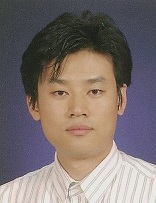Research Terms
The University of Central Florida invention describes methods of patterning well-defined nanoscale and microscale carbon structures with light using a defect-engineered photocatalyst. This invention avoids several shortcomings of current methods of carbon structure growth, such as external heating and residual contamination in the final products.
Partnering Opportunity
The research team is seeking partners for licensing and/or research collaboration.
Stage of Development
Prototype available.
The University of Central Florida invention is a process for making carbon structures using defect-engineered, 2D-material heterogeneous catalysts. The defect-laden photocatalyst can be used for propene dehydrogenation under visible illumination, and defect engineering in 2D materials provides new opportunities for metal-free heterogeneous catalysis. Hydrogenation of propene and the reduction of carbon dioxide (CO2) can be achieved on metal-free hexagonal boron nitride (h-BN) using mechanochemistry. The process highlights a new functionality of defect engineering in h-BN for visible light-assisted capture and conversion. This discovery can enable the low-temperature production of hydrogen from hydrocarbon sources and other applications such as sensing or quantum devices.
Partnering Opportunity
The research team is looking for partners to develop the technology further for commercialization.
Stage of Development
Prototype available.
The University of Central Florida invention describes a method to create functional defects in 2D materials with the ability to control their dimensions and composition. The invention uses a nanoscale tip, such as the tip of an atomic force microscopy cantilever, and light to manipulate the environment (humidity, gas, solvent, temperature, force applied, and wavenumber) directly beneath the tip for defect creation. This approach can be used to pattern arrays of nanoscale defects of selected compositions in 2D materials, with the ability to control the size and chemistry of the defects without high heat or other high-energy processes (such as plasma or high-power lasers).
Partnering Opportunity
The research team is seeking partners for licensing and/or research collaboration.
Stage of Development
Prototype available.
The University of Central Florida invention describes a method to produce green and blue hydrogen from hydrocarbons without releasing carbon gas. By using visible light (a laser, lamp, or solar source) and defect-engineered boron-rich photocatalysts, the invention highlights a new functionality of 2D materials for visible light-assisted capture and the conversion of hydrocarbons. The UCF invention produces hydrogen that is free from contaminants such as higher polyaromatic compounds, carbon dioxide, or carbon monoxide which are common in reactions performed at higher temperatures on conventional catalysts.
The heterogeneous catalyst can comprise hexagonal boron nitride and at least one catalytically active defect on the surface. Example hydrocarbon sources include methane, ethane, propene, allene, propyne, cyclohexene, and other hydrocarbons. In the lattice, the B atoms can be tuned to favor the dehydrogenation of specific hydrocarbons on reaction sites under visible light. In the process, the catalyst captures carbon atoms that form structures of potential higher value for future applications.
Partnering Opportunity
The research team is seeking partners for licensing and/or research collaboration.
Stage of Development
Prototype available.






























































